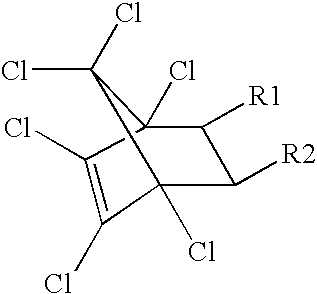Adhesion-promoting compositions and methods of promoting adhesion between a coating and a substrate
a technology of adhesion and composition, applied in the direction of adhesive types, polyurea/polyurethane coatings, coatings, etc., can solve the problems of coatings that cannot be adequately formulated, coatings that cannot be adequately applied, coatings that cannot be removed from the substrate,
- Summary
- Abstract
- Description
- Claims
- Application Information
AI Technical Summary
Problems solved by technology
Method used
Image
Examples
example 1
[0046] A reaction flask was equipped with a stirrer, thermocouple, nitrogen inlet and a condenser. The charges to the reaction flask are shown in Table 1 below. Charge A was then added and stirred under heating to reflux temperature of 135° C. to 142° C. under a nitrogen atmosphere. To the refluxing charge A, charge B and charge C were simultaneously added over a period of two hours. The reaction mixture was held at reflux condition for an hour and then cooled to 90° C. Charge D was then added and the reaction mixture was held at 90° C. for 205 min and subsequently cooled to 30° C.
example 2
[0047] A reaction flask was equipped with a stirrer, thermocouple, nitrogen inlet and a condenser. The charges to the reaction flask are shown in Table 1 below. Charge A was then added and stirred under heating to a temperature of 110° C. under a nitrogen atmosphere. The charge B and charge C additions were simultaneously started over two and three hours, respectively. After the completion of the addition of charge C, the reaction mixture was held at 110° C. for an hour and then cooled to 90° C. Charge D was then added and heated to 100° C. The reaction mixture was held at 100° C. for 208 min and subsequently cooled to 30° C.
example 3
[0048] A reaction flask was equipped with a stirrer, thermocouple, nitrogen inlet and a condenser. The charges to the reaction flask are shown in Table 1 below. Charge A was then added and stirred under heating to reflux temperature of 135° C. to 142° C. under a nitrogen atmosphere. To the refluxing charge A, charge B and charge C were simultaneously added over two hours. The reaction mixture was then held at reflux condition for an hour and then cooled to 90° C. Charge D was then added and reaction mixture was held at 90° C. for 385 min and subsequently cooled to 30° C.
PUM
| Property | Measurement | Unit |
|---|---|---|
| thickness | aaaaa | aaaaa |
| particle size | aaaaa | aaaaa |
| particle size | aaaaa | aaaaa |
Abstract
Description
Claims
Application Information
 Login to View More
Login to View More - R&D
- Intellectual Property
- Life Sciences
- Materials
- Tech Scout
- Unparalleled Data Quality
- Higher Quality Content
- 60% Fewer Hallucinations
Browse by: Latest US Patents, China's latest patents, Technical Efficacy Thesaurus, Application Domain, Technology Topic, Popular Technical Reports.
© 2025 PatSnap. All rights reserved.Legal|Privacy policy|Modern Slavery Act Transparency Statement|Sitemap|About US| Contact US: help@patsnap.com

